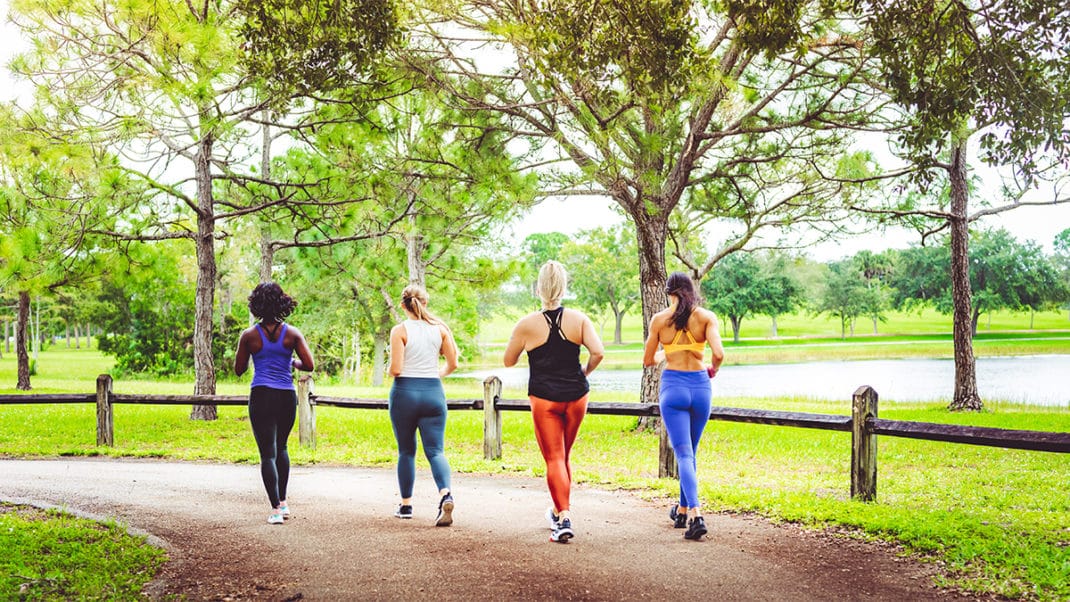Harnessing the Power of Visualization to Stay Committed to Your Fitness Routine

When you’re trying to stick with a fitness program; whether it’s working out three times a week, going for 10,000 steps a day, or hitting the weights consistently, motivation and habit are key. One of the lesser-talked-about tools in your fitness toolbox is visualization: the act of using mental imagery to rehearse or imagine behaviors, outcomes, or processes. Research from behavior-change science shows that visualization and mental imagery can play a meaningful role in helping people stick with exercise programs and adopt lasting habits.
What is Visualization and Why It Matters
Visualization refers to more than simply “imagining yourself having a healthy dinner” or “seeing yourself cross the finish line.” In behavior-change research it includes techniques like mental simulation (imagining doing the behavior step-by-step) and outcome imagery (imagining the benefits or feeling after). For example, one foundational review of imagery and mental simulation interventions described how imagining both the process (how you’ll do the workout, the environment, the steps) and the outcome (how you’ll feel after, what you’ll gain) helps build confidence and motivation.
In the context of exercise, visualization can help bridge the gap between intention and action. The human brain often treats vividly imagined experiences in a way similar to real experiences, which means we can “rehearse” behaviors mentally and thereby lower the barrier to taking action.
How Visualization Supports Adherence and Behavior Change
For many people the hardest part isn’t the workout itself, but showing up, especially when life gets busy, motivation dips, or the novelty wears off. Adherence, keeping going over time, is a major predictor of success. Research shows that adherence to exercise is a process in which behavior and attitude become more aligned over time. In one recent article the authors argue that “adherence is the process by which people behave as they think or think as they behave.”
Visualization may help in several specific ways:
- Enhances self-efficacy (the belief you can do it). Studies show that when people imagine themselves completing steps of a behavior, feel themselves succeeding, or rehearse overcoming obstacles, they boost their confidence. For example, the mediation study of college students found that exercise imagery significantly mediated the relationship between health beliefs and exercise intentions.
- Creates clearer action plans. Visualizing how you’ll do the workout, where, when, with what equipment, and how you’ll feel afterwards helps map out a credible pathway from intention to action. One RCT found that reinforcing implementation intentions (i.e., specific plans) with mental imagery improved physical activity behavior.
- Builds automaticity and habit. Over time, repeated mental rehearsal of behavior reduces the cognitive effort needed to act, making the behavior more likely to happen without deliberation. Behavior-change models emphasize that linking short-term cycles of decision-making and action supports long-term adherence.
- Overcomes mental blocks or perceived barriers. Imagining yourself managing common obstacles (e.g., you’re tired, time is short, you’re traveling) and still following through helps build a “pre-memory” of success rather than failure, which supports resilience in real life.
How to Use Visualization in Your Fitness Journey
Here’s a straightforward approach to incorporating visualization into your fitness routine:
- Define the behavior. Be specific: e.g., “I will complete 30 minutes of strength training on Monday, Wednesday and Friday, using body-weight exercises in my living room at 7 a.m.”
- Use process imagery. Spend 1-2 minutes in a calm state imagining the environment, the equipment, your posture, the workout flow, how you’ll feel during and after. Picture yourself overcoming a moment of low motivation or fatigue.
- Use outcome imagery. Then imagine how you’ll feel after: sense the energy, the accomplishment, the mood boost, the physical benefit.
- Plan for obstacles. Visualize common barriers (e.g., “it’s raining, I’d rather sleep in”) and rehearse how you’ll respond instead (“I’ll switch to a body weight routine and finish by 7:30 a.m.”).
- Repeat regularly. Do this mental rehearsal ideally before your workout week begins and during the week (e.g., before sleep or while commuting). Consistency matters.
- Combine with behavior-change techniques. Use implementation intentions (“If X, then I will Y”), goal setting, self-monitoring and social support alongside visualization for best effect. Evidence shows that multiple behavior-change techniques combined tend to improve adherence more than any single technique alone.
What the Evidence Says (and Doesn’t)
While the research on visualization in exercise adherence is promising, it’s worth noting some caveats. A systematic overview of behavior-change techniques found only small overall effects for many interventions (standard-mean-difference ~0.24) and highlighted that evidence quality is often low.
In other words, visualization is not a magic bullet—it works best as part of a broader adherence-strategy and when practiced consistently. Yet, for anyone struggling to maintain their fitness routine, it offers a low-cost, flexible, and under-utilized tool. One pilot study found guided imagery (≈4 minutes long) was feasible, improved self-efficacy, enjoyment and reported frequency of physical activity over two weeks.
Given this, think of visualization as an enhancer to your plan: it won’t replace the workout, but it can help you follow through more reliably.
Putting It All Together: A Visualization Workout Blueprint
Imagine you’re ready to start a new 8-week strength program. Before week one you sit down for five minutes with eyes closed. You imagine walking into your workout space, setting up your mat and dumbbells, doing your warm-up, feeling your muscles engage as you press, squat, hold the plank. You imagine feeling stronger, proud of showing up, the endorphin boost. Next, you imagine Friday when you’re tired but you still show up, you respond to the mental cue you visualized, you finish the workout, and you feel satisfied. You rehearse a barrier: you imagine you wake up late, but instead of skipping you shorten the warm-up and jump straight into five targeted moves—you visualize that alternative scenario.
Throughout the 8-weeks you continue these mental rehearsals and also track your adherence: you keep a log, you share your check-ins with a friend or coach, you reward yourself when you hit certain milestones (e.g., four consecutive workouts). Over time the behavior becomes more automatic, the mental “cost” lowers, the visualization helps you get through days when motivation is low.
Final Thoughts
If you find yourself starting strong with a new workout plan but then petering out, adding visualization into your routine may help you stay committed. By purposefully imagining yourself performing the behavior, enjoying the outcome and overcoming the obstacles, you create a mental pathway that supports action rather than relying solely on willpower. When you couple that with clear planning, habit-friendly scheduling, self-monitoring and social support, you increase your chances of making your exercise program a sustainable part of your life. In short: see it in your mind, then do it with your body.
References
André, N., Grousset, M., & Audiffren, M. (2024). A behavioural perspective for improving exercise adherence. Sports Medicine – Open, 10(56). https://doi.org/10.1186/s40798-024-00714-8
Gilchrist, H., Oliveira, J. S., Kwok, W. S., Sherrington, C., Pinheiro, M. B., Bauman, A., & Hassett, L. (2024). Use of behaviour change techniques in physical activity programs and services for older adults: Findings from a rapid review. Annals of Behavioral Medicine, 58(3), 216-226. https://doi.org/10.1093/abm/kaad074
Hagger, M. S., Lonsdale, A. J., & Chatzisarantis, N. L. D. (2012). Imagery, visualization, and mental simulation interventions. In Handbook of Behaviour Change. Cambridge University Press.
Hamilton, K., Keech, J. J., Peden, A., & Hagger, M. S. (2019). A protocol for developing a mental imagery intervention: A randomized controlled trial. Emotion, 19. https://doi.org/10.1037/emo0000678
Mitchell, A. D., Martin, L. E., Baldwin, A. S., & Levens, S. M. (2021). Mindfulness-informed guided imagery to target physical activity: A mixed-method feasibility and acceptability pilot study. Frontiers in Psychology, 12. https://doi.org/10.3389/fpsyg.2021.742989
Pagoto, S. (2015). Exercise adherence: Translating the evidence on barriers and facilitators into practice. American Council on Exercise Scientific Advisory Panel Report.
Zhang, L., Bai, D., Song, P., & Zhang, J. (2024). Effects of physical health beliefs on college students’ physical exercise behaviour intention: Mediating effects of exercise imagery. BMC Psychology, 12(99). https://doi.org/10.1186/s40359-024-01558-3





